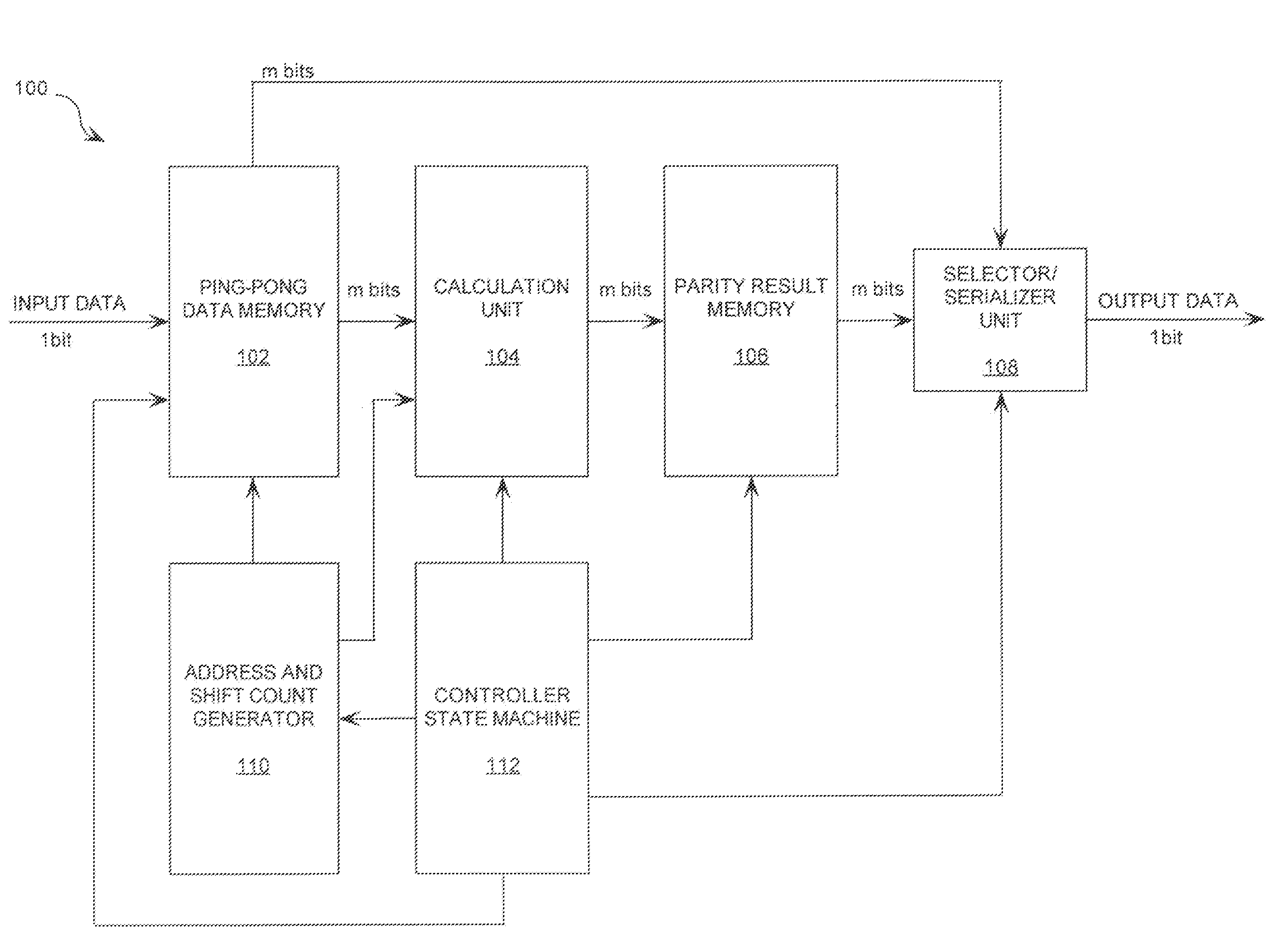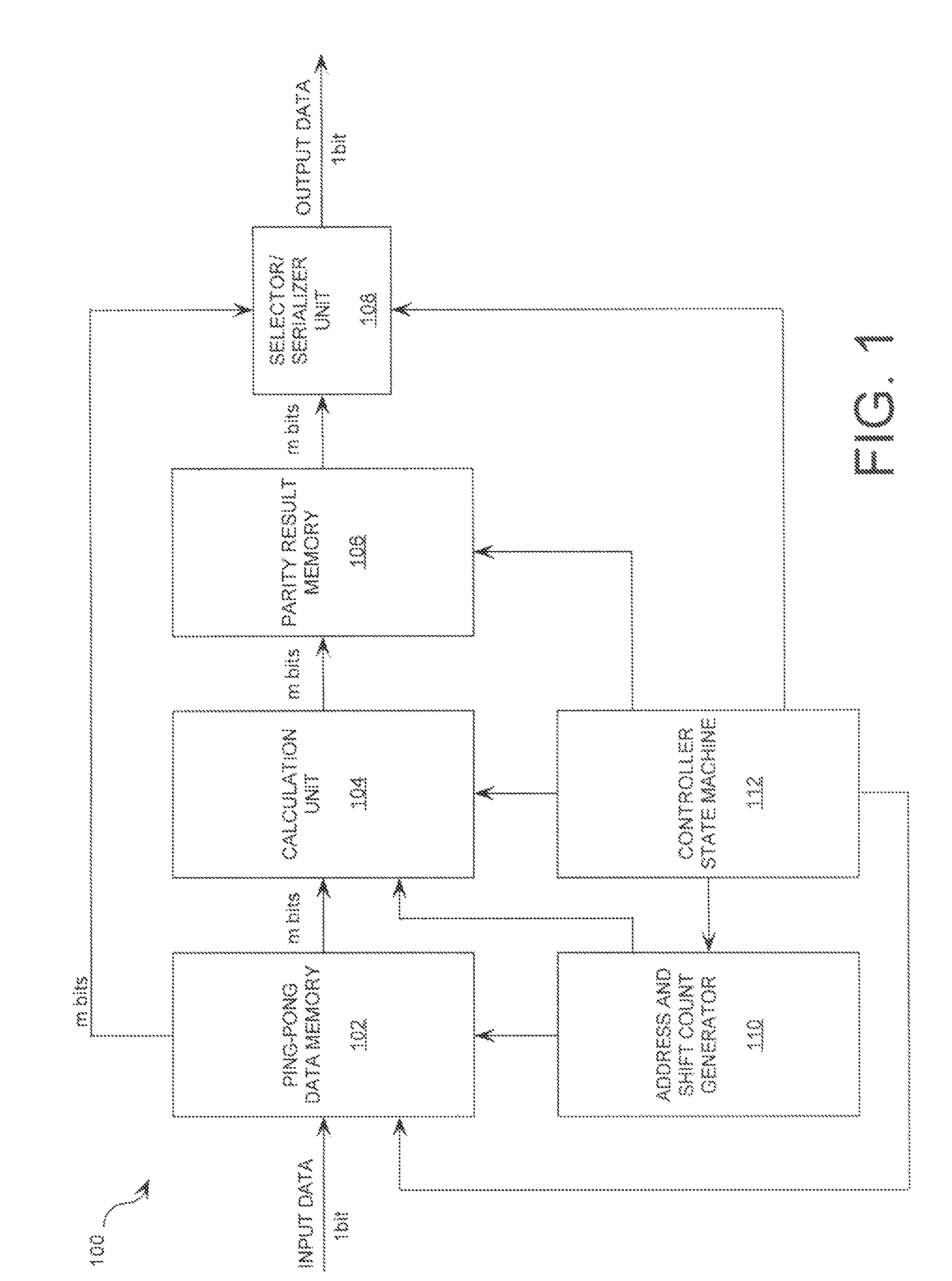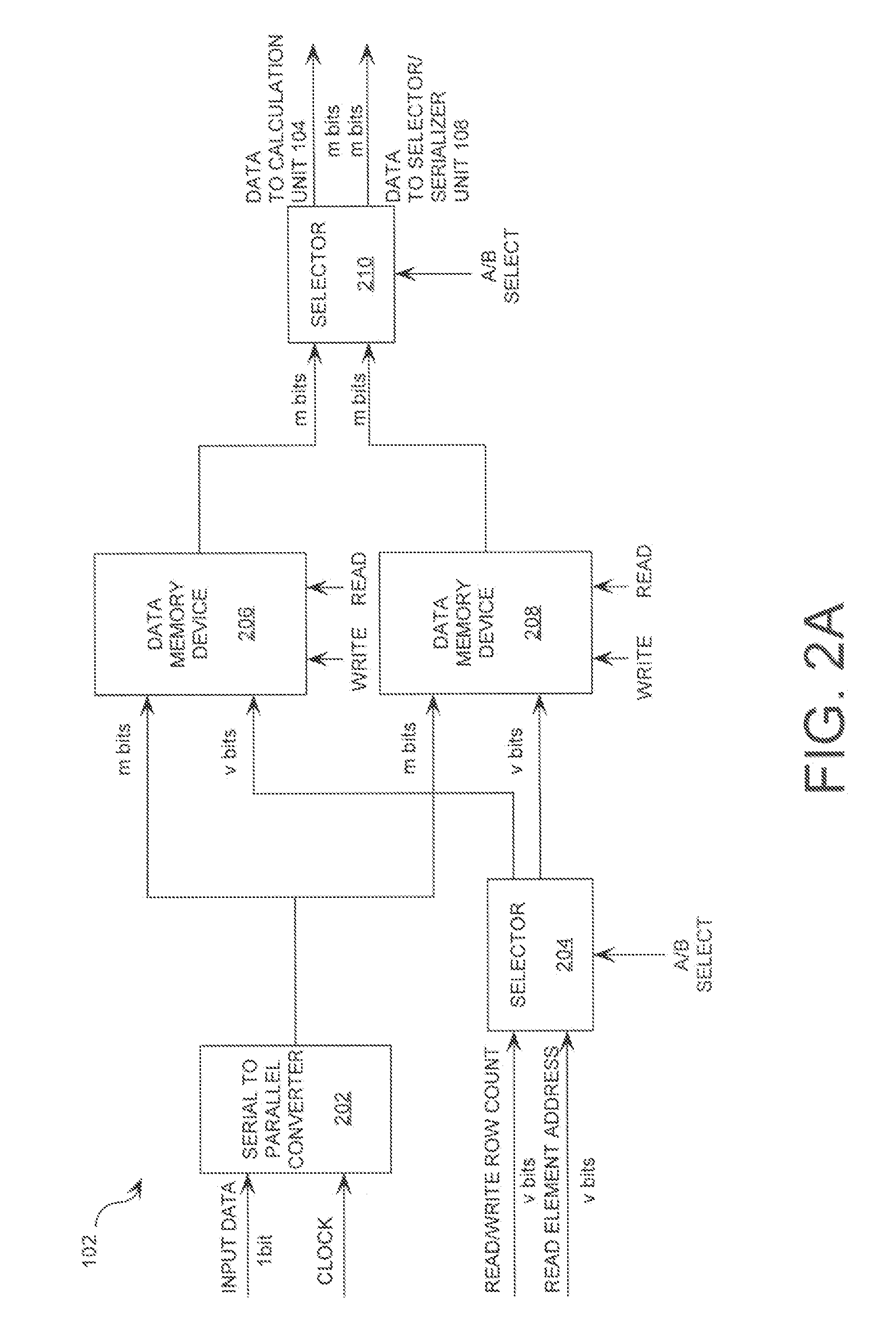High rate, long block length, low density parity check encoder
a parity check and encoder technology, applied in the field of encoders, can solve the problems of not providing optimized hardware and/or software implementations of algorithms for generating fecc codes, affecting the efficiency of coding, and not being reasonably practical in their implementation
- Summary
- Abstract
- Description
- Claims
- Application Information
AI Technical Summary
Benefits of technology
Problems solved by technology
Method used
Image
Examples
example 1
[0106]Let m equal sixteen (16) and the desired total shift amount equal nine (9). In such a scenario, a u bit word is communicated from the ASC generator 110 (described above in relation to FIG. 1) to the register 418. The u bit world includes shift count information, More particularly, the u bit word is a binary representation of the desired total shift amount nine (9), As such, the u bit word is defined as a sequence 1 0 0 1. The register 418 communicates the first bit to the selector 402 and the remaining three (3) bits to the register 420. The first bit has a value of one (1). In effect, the selector 402 is transitioned into a first state. In this first state, the selector 402 circularly shifts each bit of an m bit word by eight (m / 2=16 / 2=8) positions. Subsequently, the selector 402 communicates the shifted m bit word to the register 404. In turn, the register 404 temporarily stores the shifted m bit word and communicates the shifted m bit word to the selector 406.
[0107]The regi...
PUM
 Login to View More
Login to View More Abstract
Description
Claims
Application Information
 Login to View More
Login to View More - R&D
- Intellectual Property
- Life Sciences
- Materials
- Tech Scout
- Unparalleled Data Quality
- Higher Quality Content
- 60% Fewer Hallucinations
Browse by: Latest US Patents, China's latest patents, Technical Efficacy Thesaurus, Application Domain, Technology Topic, Popular Technical Reports.
© 2025 PatSnap. All rights reserved.Legal|Privacy policy|Modern Slavery Act Transparency Statement|Sitemap|About US| Contact US: help@patsnap.com



